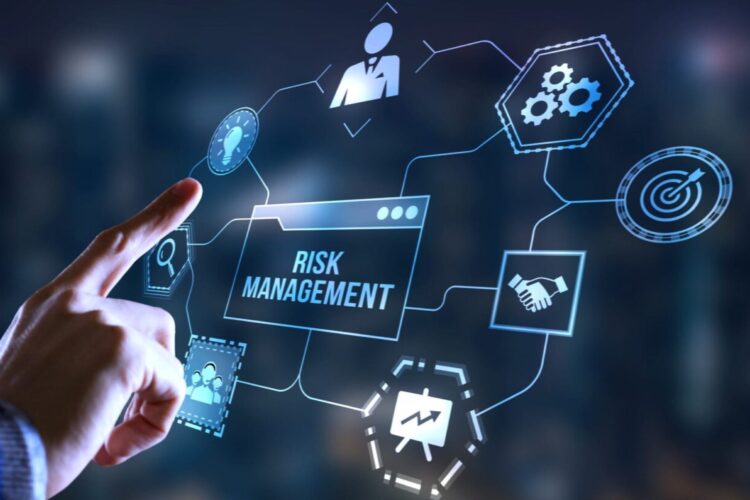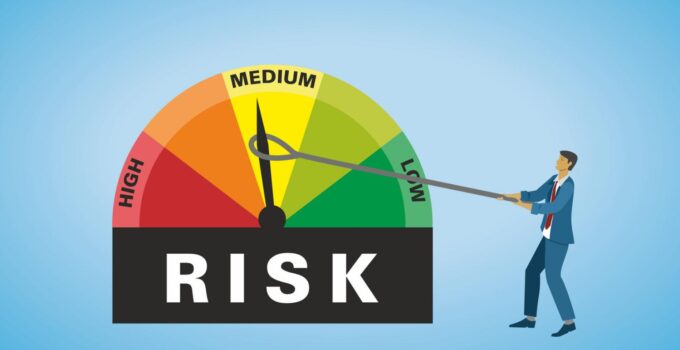Risk management systems are essential to the success of businesses of all sizes, as they help organizations identify, assess, and manage risks that could negatively impact their operations. Effective risk management can help businesses make informed decisions, reduce the likelihood of financial losses, and maintain the trust of stakeholders.
This article will discuss the importance of risk management systems for businesses and key strategies organizations can use to manage risks.
Page Contents
Why Risk Management Systems Are Important For Businesses

Source: focus.namirial.global
Risk management systems are essential for businesses for several reasons, including:
Minimizing Financial Losses
Effective risk management can help businesses identify potential risks and take appropriate measures to mitigate them. For example, Risk management system in Romania is very strong to minimize any sort of financial losses. Businesses can avoid financial losses and maintain profitability by reducing the likelihood and impact of risks.
Protecting Reputation And Brand Image
Negative events such as product recalls, data breaches or legal disputes can damage a company’s reputation and erode the trust of stakeholders, including customers, employees, and investors. Risk management systems help businesses identify and mitigate risks that could negatively impact their reputation and brand image.
Meeting Regulatory Compliance
Many industries are subject to regulatory requirements that dictate how businesses must manage risks. For example, financial institutions must comply with regulations related to data security and financial stability. Effective risk management systems help businesses comply with these regulations and avoid costly penalties.
Improving Decision-Making
Risk management systems provide businesses with insights into potential risks and their potential impact on the organization. This information can help businesses make informed decisions and allocate resources effectively.
Key Strategies for Effective Risk Management

Source: lucidchart.com
There are several key strategies that businesses can use to implement effective risk management systems. These strategies include:
Risk Assessment
The first step in effective risk management is to identify potential risks. Businesses can conduct a risk assessment to identify potential risks and evaluate their likelihood and potential impact. A risk assessment can be conducted using a variety of methods, including surveys, interviews, and data analysis.
Risk Mitigation
Once potential risks have been identified, businesses can take measures to mitigate them. Risk mitigation strategies may include developing contingency plans, implementing security measures, or purchasing insurance coverage. The goal of risk mitigation is to reduce the likelihood and impact of potential risks.
Monitoring And Control

Source: lqdfinance.com
Risk management is an ongoing process that requires continuous monitoring and control. Businesses should establish a system for monitoring risks and tracking their impact on the organization. This may involve setting up a risk management team or using software tools to track risks and control measures.
Communication And Reporting
Effective risk management requires clear communication and reporting risks and their potential impact. Businesses should establish a system for communicating risks to stakeholders, including employees, customers, and investors. Regular reporting on risk management activities can help maintain transparency and build stakeholder trust.
Training And Education
Finally, businesses should invest in training and education to ensure that employees are aware of potential risks and know how to manage them. This may include providing training on data security, disaster recovery, or crisis management. By investing in employee training, businesses can build a culture of risk awareness and preparedness.
Integration Of Risk Management Into Business Operations
One of the key strategies for effective risk management is the integration of risk management into business operations. This involves incorporating risk management into the decision-making process at all levels of the organization. By doing so, businesses can ensure that risks are identified and managed proactively rather than reactively. This approach can help businesses identify new opportunities and improve their overall performance.
For example, a manufacturing company may integrate risk management into its product development process by conducting risk assessments at each stage of the development cycle. This can help the company identify potential defects, supply chain disruptions, or regulatory issues early on before they become major problems. By doing so, the company can reduce the risk of product recalls, lawsuits, and reputational damage.
Continuous Improvement

Source: mcpconsultinggroup.com
Another important strategy for effective risk management is continuous improvement. Risk management is an ongoing process that requires constant monitoring and adjustment. Businesses should regularly review their risk management systems and processes to identify areas for improvement.
This may involve updating risk assessments, revising mitigation strategies, or implementing new controls. By continuously improving their risk management systems, businesses can stay ahead of potential risks and maintain their competitive edge.
Scenario Planning
Scenario planning is another strategy that businesses can use to manage risks. Scenario planning involves developing hypothetical scenarios that could impact the business and evaluating the potential impact of each scenario. This can help businesses identify potential risks and develop contingency plans. Scenario planning can be especially useful in industries that are subject to high levels of uncertainty, such as the technology or energy sectors.
For example, a technology company may use scenario planning to evaluate the potential impact of changes in the regulatory environment, advances in technology, or shifts in consumer behavior. By doing so, the company can develop strategies to mitigate these risks and stay ahead of the competition.
Collaboration And Partnerships

Source: syspro.com
Collaboration and partnerships can also be effective strategies for managing risks. Businesses can collaborate with other organizations, such as suppliers or industry associations, to identify and manage shared risks.
By working together, businesses can leverage their collective expertise and resources to reduce the impact of potential risks. For example, a company in the healthcare industry may collaborate with other healthcare providers to manage the risk of infectious disease outbreaks. By sharing information and resources, the providers can develop more effective strategies for preventing and containing outbreaks.
Conclusion
Effective risk management is essential for the success of businesses of all sizes. By identifying potential risks and taking appropriate measures to manage them, businesses can reduce the likelihood of financial losses, protect their reputation and brand image, and maintain the trust of stakeholders.
Key strategies for effective risk management include risk assessment, risk mitigation, monitoring and control, communication and reporting, training and education, integration into business operations, continuous improvement, scenario planning, and collaboration and partnerships. By implementing these strategies, businesses can build a culture of risk awareness and preparedness and stay ahead of potential risks.





